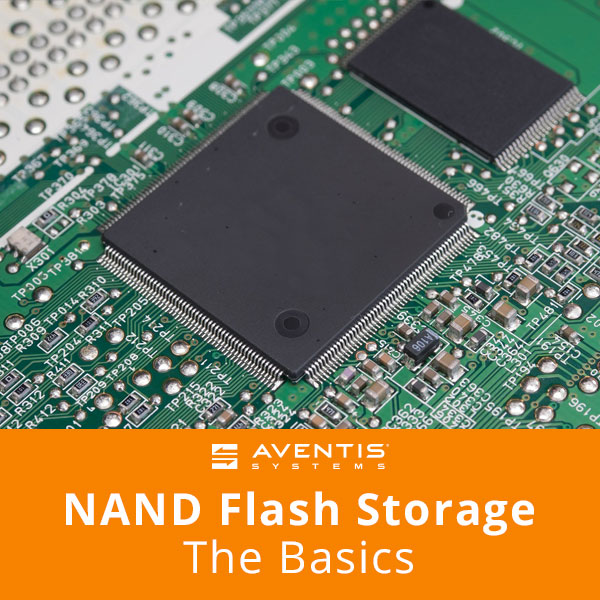NAND Flash Storage: The Basics

Flash storage is on the rise and with it new innovations. One of the biggest being the development of the world’s first 512 Gb 64-layer 3D NAND chip by Western Digital. This development really packs a punch in terms of higher storage capacity in smaller form factors. For someone who is in the storage industry a statement about a NAND chip makes a lot of sense but not all of us know a lot about flash storage. So let’s break things down to their basic parts.
First you need to understand what NAND Flash even is. NAND Flash Storage is a type of non-volatile storage and doesn’t require any power to retain data. A common consumer product with this type of flash storage would be a flash drive, also known as a thumb drive. NAND Flash can also be found in digital cameras and mp3 players.
NAND Flash is made up of chips that store data on them. Each chip has a finite amount of read-write cycles before it becomes unusable. This is because the erasing process for flash storage involves zapping the chip with an electrical charge. That electrical charge degrades the chip a little bit each time it’s zapped so the chip become less and less reliable to the point where the flash controller can’t handle the chip errors any more. At that point the chip is no longer able to be used and data is moved off of it to a different chip.
To combat this every NAND Flash Storage drive comes over provisioned. This means that there are more chips in the drive than what is stated as the drives capacity. These extra chips are there to replace flash chips as they wear out and helps to extend the drives endurance level (aka how long it’ll last). The amount of over provisioning for each drive varies from 25% to over 100%.
It’s also good to note that one of the biggest spec to look at when it comes to flash storage endurance is the Total Bytes Written (TBW) or Writes-Per-Day. This lets you know how often the entire drive can be rewritten which impacts the life span of the drive. Over the past few years flash storage has gotten more and more robust so that it can compete with magnetic storage (HDD) in the enterprise space. Enterprise level drives now have an average lifespan of five years and are a great investment for anyone running robust applications that need a low level of latency.
If you are just getting into flash storage options the Western Digital Blue SSDs are a great place to start. These drives are optimized for high performance especially when it comes to multitasking. Also with an endurance rating of up to 400TBW and a 1.75 million hour mean time to failure the Western Digital Blue SSDs are made to last.